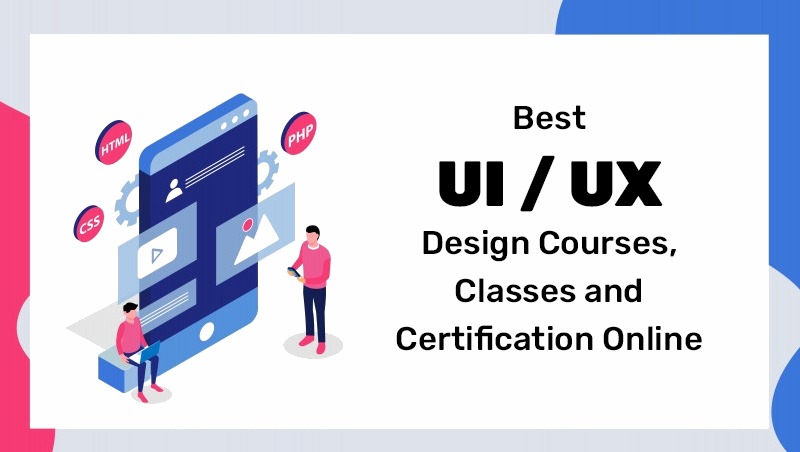IFyou are interested in pursuing a career in UX/UI design, you might be wondering what are the best ways to learn the skills and knowledge you need. UX/UI design is a fast-growing and dynamic field that requires creativity, problem-solving, and user empathy. But how can you acquire these competencies and showcase them to potential employers or clients?
In this blog post, we will explore the different options for UX/UI education, such as online courses, bootcamps, and certifications. We will also discuss the pros and cons of each option, and how they can help you start or advance your career in UX/UI design.
Online courses
Online courses are one of the most popular and accessible ways to learn UX/UI design. There are many platforms that offer online courses on various topics related to UX/UI design, such as user research, wireframing, prototyping, usability testing, visual design, and more. Some of the most well-known platforms are Coursera, Udemy, Skillshare, edX, and LinkedIn Learning.
Online courses have many advantages for learners who want to learn UX/UI design at their own pace and convenience. You can choose from a wide range of courses that suit your interests and goals, and learn from experts in the field. You can also access the course materials anytime and anywhere, as long as you have an internet connection. Online courses are also usually cheaper than other forms of education, and some of them even offer certificates of completion that you can add to your resume or portfolio.

However, online courses also have some drawbacks that you should be aware of. Online courses may not provide enough feedback or guidance from instructors or peers, which can affect your learning outcomes and motivation. Online courses may also not cover all the aspects of UX/UI design that you need to know, or may not be updated with the latest trends and best practices. Online courses may also not be enough to demonstrate your skills and abilities to employers or clients, who may prefer more formal or hands-on forms of education.
Bootcamps
Bootcamps are intensive and immersive programs that aim to teach you the fundamentals of UX/UI design in a short period of time. Bootcamps usually last from a few weeks to a few months, and involve a combination of lectures, workshops, projects, and mentorship. Some of the most popular bootcamps for UX/UI design are General Assembly, Ironhack, Springboard, CareerFoundry, and Designlab.
Bootcamps have many benefits for learners who want to learn UX/UI design quickly and effectively. You can learn from experienced instructors and mentors who can provide you with feedback and support throughout the program. You can also work on real-world projects that can help you build your portfolio and showcase your skills. Bootcamps can also help you network with other learners and professionals in the field, and connect you with potential employers or clients.

However, bootcamps also have some challenges that you should consider before enrolling. Bootcamps are usually very expensive, ranging from a few thousand to tens of thousands of dollars. Bootcamps are also very demanding and require a lot of time and commitment from learners who have to balance their studies with their work or personal life. Bootcamps may also not guarantee a job placement or career advancement after graduation, as the market for UX/UI designers is very competitive and requires more than just technical skills.
Certifications
Certifications are credentials that validate your knowledge and skills in a specific area of UX/UI design. Certifications are usually offered by professional organizations or associations that set the standards and criteria for the certification process. Some of the most recognized certifications for UX/UI design are Certified Professional in User Experience (CPUX), Certified Usability Analyst (CUA), Certified User Experience Analyst (CXA), Certified User Experience Professional (CUXP), and Certified User Interface Designer (CUID).
Certifications have many advantages for learners who want to enhance their credibility and reputation in UX/UI design. You can demonstrate your expertise and competence in a specific domain of UX/UI design that is relevant to your career goals. You can also stand out from other candidates who may not have the same level of certification or experience. Certifications can also help you increase your confidence and self-esteem as a UX/UI designer.
However, certifications also have some limitations that you should keep in mind. Certifications may not reflect your actual skills or abilities as a UX/UI designer, as they are based on theoretical knowledge or standardized tests that may not capture the complexity and diversity of real-world situations. Certifications may also not be recognized or valued by all employers or clients, who may prefer other forms of education or evaluation. Certifications may also require a lot of time and money to prepare for and maintain, as they often involve exams, fees, renewals, and continuing education.
Conclusion
As you can see, there are many options for UX/UI education that can help you start or advance your career in UX/UI design. Each option has its own strengths and weaknesses, and you should choose the one that best suits your needs, preferences, and goals. You should also consider combining different options to create a well-rounded and comprehensive learning experience that can help you become a successful and versatile UX/UI designer.




